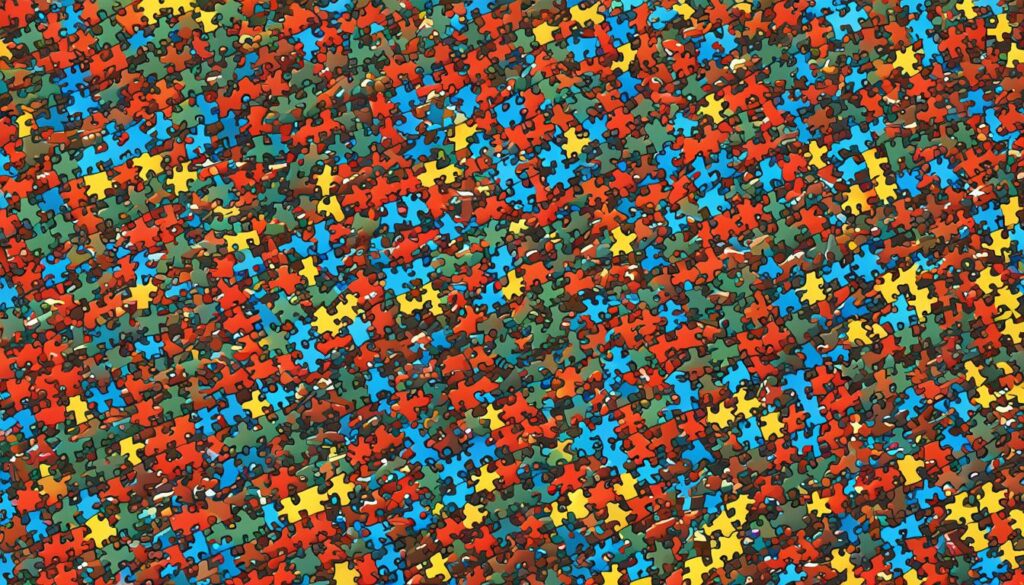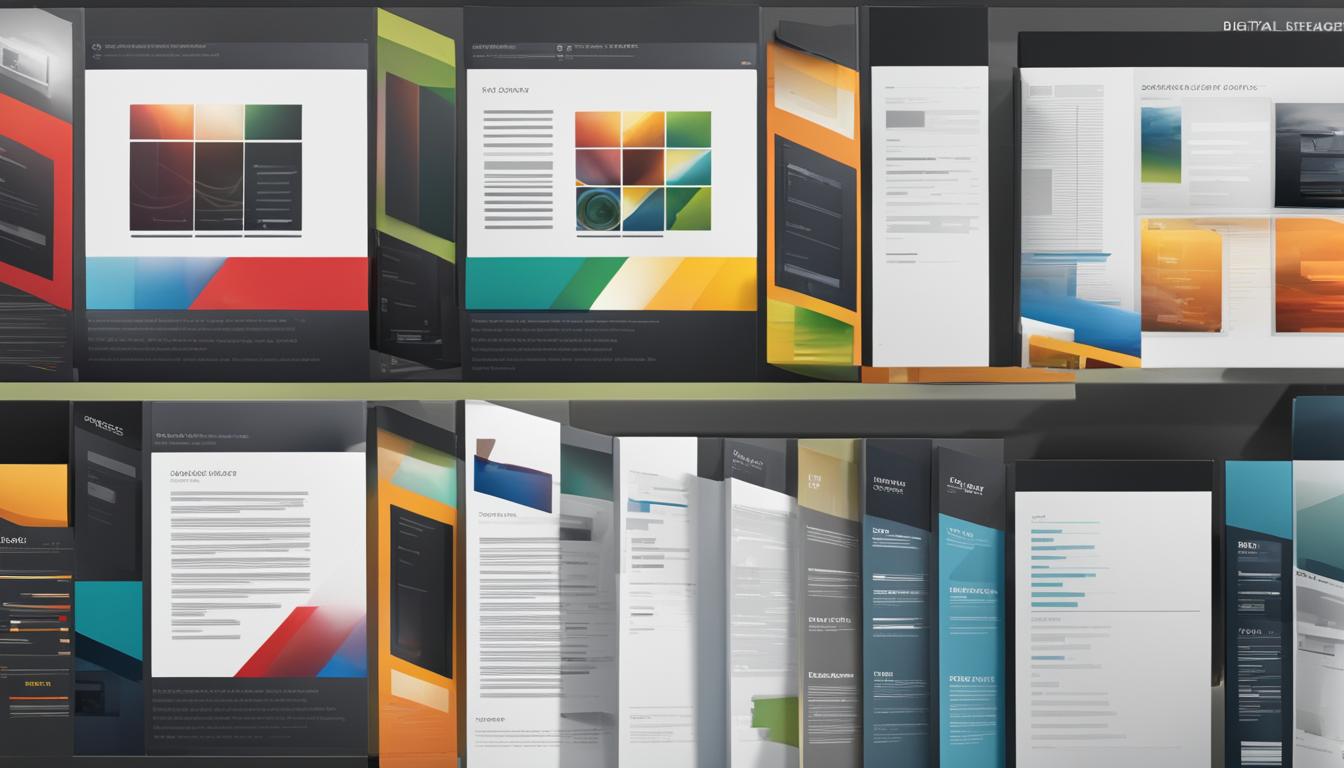Hey there! I’m excited to share with you some of the future trends in image optimization for SEO. As online content becomes increasingly visual, it’s more important than ever to ensure that your images are optimized for search engines. By following the latest techniques and best practices, you can improve your website’s visibility and ultimately boost your SEO ranking.
Let’s dive into the world of image optimization and explore the strategies that will help your website stand out in search engine results.
Key Takeaways:
- Stay updated on the latest image optimization techniques to improve your website’s SEO performance.
- Optimize images for responsiveness to ensure a seamless user experience across different devices.
- Reduce image size and choose the right format to improve page speed and loading times.
- Add descriptive alt text and captions to provide context and improve accessibility.
- Implement schema markup and structured data to enhance search engine understanding of your images.
Use of Responsive Images
Responsive images have revolutionized the world of SEO by adapting to different screen sizes and resolutions, ensuring a seamless user experience on any device. This adaptability not only makes your website visually appealing but also reduces bounce rates and improves your SEO ranking. To make your images responsive, you can utilize the srcset and sizes attributes in your img tags. Alternatively, you can take advantage of a plugin or service that automatically generates responsive images for you.
By implementing responsive images, you guarantee that your website is accessible to users across various devices, from smartphones to desktop computers. The ability of these images to adapt to different screen sizes not only enhances the user experience but also boosts your SEO efforts. Responsive images load quickly and optimize site speed, which is vital for maintaining user engagement and reducing the bounce rate.
When the srcset and sizes attributes are used, the browser can choose the most appropriate image resolution based on the screen size, reducing unnecessary bandwidth usage and improving page load times. This results in a smoother browsing experience for your visitors and contributes to better SEO ranking. Moreover, the implementation of responsive images aligns with Google’s guidelines on mobile-first indexing, which prioritize user-friendly and mobile-optimized websites.
Benefits of Using Responsive Images:
- Adaptability to different screen sizes and resolutions
- Enhanced user experience and reduced bounce rate
- Improved SEO ranking
- Optimized site speed and performance
- Reduced bandwidth usage
Whether you choose to manually implement responsive images using the srcset and sizes attributes or rely on a plugin or service, integrating responsive images into your website is crucial for providing a seamless user experience, improving SEO ranking, and ensuring optimal performance across devices.
| Plugins or Services for Responsive Images | Key Features |
|---|---|
| WP Responsive Images |
|
| Cloudinary |
|
| Imagify |
|
Optimize Image Size and Format

When it comes to SEO, image size and format are crucial factors that can significantly impact your website’s page speed and overall performance. Large and uncompressed images not only slow down web pages but also increase bandwidth usage and annoy visitors, leading to higher bounce rates. To avoid these issues and optimize your images for better SEO results, there are a few key considerations to keep in mind.
Image Size
Optimizing image size plays a vital role in improving page speed, which is a crucial factor for SEO. To ensure faster loading times and a smoother user experience, it’s important to compress and resize your images without compromising their quality. Fortunately, there are many tools and plugins available that can help you achieve this. By reducing the file size of your images, you can significantly enhance your website’s performance and SEO ranking.
Image Format
Choosing the right image format is equally important for SEO optimization. Different image formats are suitable for different purposes. For example, JPEG is ideal for compressing and displaying photos, while PNG is more suitable for graphics and images with transparent backgrounds. WebP, on the other hand, is a modern image format that offers the best of both worlds, providing high-quality compression for both photos and graphics. By selecting the appropriate image format, you can effectively balance image quality and file size, resulting in faster-loading web pages and improved SEO performance.
In conclusion, optimizing image size and format is crucial for SEO success. By compressing and resizing your images and choosing the appropriate image format, you can significantly improve your website’s page speed, increase user engagement, and boost your overall SEO ranking. Remember to utilize tools or plugins that can assist you in achieving optimal image optimization, and make sure to implement these strategies consistently for the best results.
| Image Format | Best Use Case | Advantages |
|---|---|---|
| JPEG | Photos | Efficient compression for photos, maintains good quality |
| PNG | Graphics, images with transparency | Lossless compression, supports transparency |
| WebP | Photos, graphics | High-quality compression, supports transparency, small file size |
Descriptive Alt Text and Captions

When it comes to optimizing images for SEO, incorporating descriptive alt text and captions is crucial. Alt text, also known as alternative text or alt attribute, is the text that appears when an image fails to load or when it is accessed by a screen reader.
Alt text plays a vital role in improving SEO because it provides relevant keywords, context, and information about the image to search engines. It helps search engines understand what the image is about and can improve the accessibility of your website for users with visual impairments.
When writing alt text, it’s important to use relevant keywords that accurately describe the image. This helps search engines index and rank your website based on the content of your images. Additionally, alt text should provide enough information to give users a clear understanding of what the image depicts, even if they can’t see it.
In addition to alt text, captions are another element that can enhance the SEO optimization of your images. Captions are the text that accompanies an image on a web page, providing additional context and information.
Using captions for your images not only improves accessibility but also enhances user engagement. Captions can grab the attention of users, provide more information, or even convey a message that complements the image.
When creating captions, it’s important to keep them concise and informative. They can be used to provide additional details about the image, highlight key points, or even add a touch of creativity to enhance user experience.
Adding descriptive alt text and captions manually for each image on your website can be time-consuming, especially if you have a large number of images. However, there are plugins and services available that can generate alt text and captions automatically based on image recognition technology.
| Benefits of Descriptive Alt Text and Captions | Plugins or Services |
|---|---|
|
|
By utilizing these alt text and caption generation plugins or services, you can save time while still ensuring that your images are well-optimized for SEO, accessibility, and user engagement.
Schema Markup and Structured Data

When it comes to image optimization for SEO, schema markup and structured data play a crucial role in helping search engines understand the content and context of your web pages. These code elements provide additional information about your images, such as their type, title, description, URL, and licensing, optimizing them for better visibility and search engine rankings.
One of the main benefits of implementing schema markup and structured data is the ability to create rich snippets and image carousels in search engine results. Rich snippets provide more detailed information about your web page, including images, which can attract more clicks and traffic. Image carousels, on the other hand, allow users to scroll through a series of images directly in the search results, enticing them to click through to your website.
To implement schema markup and structured data for image optimization, you can utilize the JSON-LD format, which is a widely supported way of adding structured data to your HTML. JSON-LD allows you to define the type of content, such as an image, and provide relevant details like the title, description, URL, and licensing information.
If you’re not comfortable working with JSON-LD or prefer a simpler solution, there are plugins and services available that can handle schema markup and structured data automatically. These tools take care of the technical aspects, allowing you to focus on optimizing your images and providing valuable information to search engines.
By leveraging schema markup and structured data, you can significantly enhance your image optimization efforts and improve your SEO performance. Not only will search engines better understand your content, but you’ll also attract more clicks and traffic with eye-catching rich snippets and image carousels in the search results. Make sure to incorporate schema markup and structured data into your image optimization strategy to stay ahead of the competition and maximize your online visibility.
| Benefits of Schema Markup and Structured Data for Image Optimization | How to Implement Schema Markup and Structured Data |
|---|---|
|
|
Lazy Loading and Image CDN
When it comes to improving page speed and SEO, lazy loading and image CDN (Content Delivery Network) are two highly effective techniques worth considering. By incorporating these strategies into your website, you can enhance user experience, reduce page size, save bandwidth, and ultimately boost your SEO performance.
Lazy loading is a technique that involves loading images only when they are needed. This means that non-visible images, such as those located below the fold or in sections of the page that the user hasn’t reached yet, are delayed in their loading process. By prioritizing the loading of images as the user scrolls down the page, lazy loading significantly improves page speed and helps to optimize SEO.
“Lazy loading prioritizes the loading of images as the user scrolls down the page, significantly improving page speed and SEO.”
Another effective technique is utilizing an image CDN. An image CDN delivers your images from a network of servers located strategically around the world. By doing so, the image CDN ensures that images are served to the user from a server that is geographically closer to their location. As a result, the time required to load the images is greatly reduced, improving overall page speed and user experience.
Let’s take a closer look at the benefits of implementing lazy loading and image CDN:
- Improved Page Speed: By loading images only when needed and delivering them from servers closer to the user, lazy loading and image CDN reduce the overall loading time, resulting in fast and efficient page loading.
- SEO Optimization: With improved page speed and user experience, lazy loading and image CDN give your website a competitive edge in SEO. Search engines prioritize fast-loading websites, making this technique a crucial aspect of your SEO strategy.
- Bandwidth Saving: By delaying the loading of non-visible images, lazy loading reduces the amount of bandwidth consumed. This not only saves costs but also ensures a smoother browsing experience for users with slower connections.
- Enhanced User Experience: Lazy loading and image CDN contribute to a seamless user experience by prioritizing the loading of visible images and eliminating the frustration of waiting for non-visible images to load.
Implementing lazy loading and image CDN can be done through various methods, including plugins or services specifically designed for this purpose. By choosing the right plugin or service for your website, you can effortlessly integrate these techniques and experience the benefits they offer.
Overall, lazy loading and image CDN are effective strategies to improve page speed, optimize SEO, save bandwidth, and enhance user experience. Consider implementing these techniques through a reliable plugin or service to unlock their full potential and stay ahead in the competitive online landscape.
Visual Search Optimization

Visual search is a rising trend in online search, where users can search for information using images instead of text. This innovative approach to searching appeals to users by providing a more engaging and intuitive experience. As a result, optimizing your website for visual search has become increasingly crucial for SEO.
To optimize for visual search, it is important to implement image SEO best practices. One of the key aspects is using representative and high-quality images that accurately depict your content. These images not only attract users but also promote engagement as they enhance the overall visual appeal of your website.
Additionally, optimizing file names and alt text is essential for search engines to understand and index your visual content effectively. Choose descriptive file names that reflect the content of your images and include relevant keywords. Similarly, write concise and informative alt text that describes the image in a way that improves search engine understanding and accessibility for visually impaired users.
Structured data is another powerful tool to improve search engine understanding of your visual content. By implementing structured data markup, such as JSON-LD, you can provide additional information about your images, such as their type, title, description, URL, and even licensing details. This enriched data helps search engines better index and display your images in search results, including rich snippets and image carousels, which can attract more clicks and drive organic traffic to your website.
When optimizing for visual search, it’s important to keep in mind the overall user experience. Ensure that your website is responsive and loads quickly to provide a seamless experience across different devices and screen sizes. Additionally, using lazy loading techniques and utilizing an image CDN (Content Delivery Network) can improve page speed and enhance user experience by loading images only when needed and delivering them efficiently from servers closer to the user’s location.
In conclusion, visual search optimization is an integral part of modern SEO. By implementing image SEO best practices, using representative and high-quality images, optimizing file names and alt text, utilizing structured data, and enhancing user experience, you can position your website for success in the era of visual search.
| Benefits of Visual Search Optimization | Best Practices |
|---|---|
|
|
Conclusion
In conclusion, image optimization for SEO is crucial in today’s digital landscape. By implementing the discussed techniques and staying up to date with future trends, you can significantly enhance your website’s visibility, user experience, and SEO ranking. Whether it’s using responsive images, optimizing image size and format, incorporating descriptive alt text and captions, implementing schema markup and structured data, leveraging lazy loading and image CDN, or optimizing for visual search, each aspect of image optimization plays a vital role in improving your website’s SEO performance.
Keeping up with the ever-evolving world of search engine optimization is essential. By embracing these future trends in image optimization for SEO, you can stay ahead of the curve and achieve success in your online presence. Remember, responsive images ensure your website remains visually appealing and accessible on any device while optimizing image size and format significantly impact page speed and user satisfaction. Descriptive alt text and captions not only improve SEO but also enhance accessibility and user engagement.
Implementing schema markup and structured data provides search engines with valuable information about your images, attracting more clicks and increasing traffic through rich snippets and image carousels. Lazy loading and image CDN techniques improve page speed, decrease page size, and enhance user experience, all vital factors for SEO. Lastly, optimizing for visual search allows users to search with images, promoting engagement and expanding your reach.
By following these image optimization best practices and staying current with future trends, you can achieve better visibility, higher search engine rankings, and a more positive user experience. Invest time and effort into image optimization, and you’ll see a significant improvement in your website’s SEO performance in the competitive online landscape.










